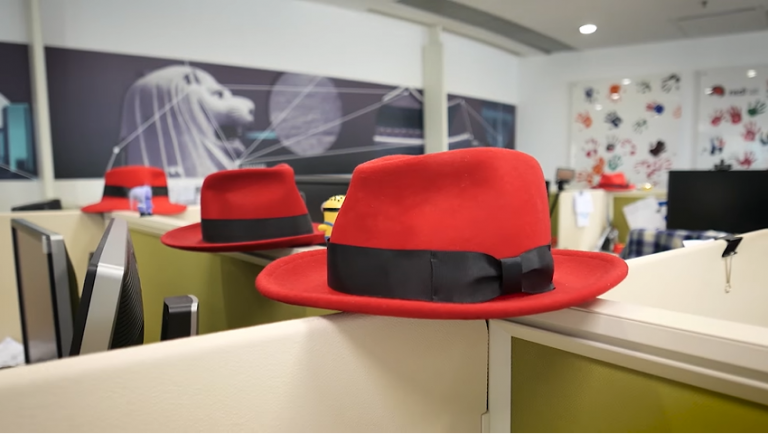 CLOUD
CLOUD
 CLOUD
CLOUD
 CLOUD
CLOUD
Red Hat Inc. is again demonstrating why it paid $100 million for open-source automation startup Ansible Inc. in 2015. The company today announced it’s integrating its Ansible Automation Platform and Advanced Cluster Management for Kubernetes product lines to improve automation in cloud-native infrastructure.
Red Hat said the move is “intended to help drive application modernization for IT environments, breaking down the workflow and development silos between traditional servers and virtual machines and cloud-native clusters.”
Launched in July, Advanced Cluster Management is intended to help customers better manage and scale OpenShift clusters across the hybrid cloud as they bid to modernize their portfolios. OpenShift is the Red Hat-branded version of Kubernetes, the orchestrator for the portable, self-contained application operating environments called containers.
Application modernization is one of the hottest topics in information technology today as companies seek the Holy Grail of digital transformation. The reality, however, is that many legacy applications can’t be easily outfitted with cloud-native features such as application program interfaces, scale-out expansion and portability across clouds.
Integration between Ansible Automation Platform and Advanced Cluster Management is intended to reduce the number of tools and handoffs between siloed IT groups, Red Hat said. Advanced Cluster Management provides cloud native management and monitoring and acts as a control plane across OpenShift clusters to trigger automated functions like system updates, load balancing and allocation of server resources.
Red Hat isn’t proposing to ease the process of making older applications more cloud native, said Thomas Anderson, vice president of Ansible product management at Red Hat. “It’s more about making it easier for development teams to build and deploy cloud native applications across Kubernetes clusters and clouds and for operations teams to manage the infrastructure that supports those containerized applications,” he said.
For example, a development team putting a new cloud native application into production across a set of OpenShift clusters might have to update an enterprise system of record as well as network infrastructure to direct traffic to the new application, Anderson said. It might also need to update a ticketing system, security controls and update dependent components like a database. “Rather than recreating new automation patterns from scratch they can use the Kubernetes native integration of Ansible Automation Platform and Red Hat Advanced Cluster Management to reuse and apply established Ansible workflows that thousands of customers are already using,” he said.
The integration gives customers access to OpenShift’s Kubernetes Operators, which are software extensions to Kubernetes that manage applications and components. The Resource Operator for Advanced Cluster Management can call on Ansible Automation Platform to execute tasks more efficiently outside the Kubernetes cluster, simplifying administration.
In conjunction with the announcement, Red Hat also announced a new version of the Ansible Automation Platform along with new Certified Ansible Content Collections, an automation services catalog and private Automation Hub.
Ansible Content Collections, which was introduced last year, organizes Ansible content into a modular format that provides a standardized method for automation developers to build and package automations. Collections delivered in the Automation Hub are certified by the Ansible partner network and are tested, validated and fully supported for enterprise-class production environments, the company said.
The new version of Automation Platform will include newly certified Content Collections for OpenShift, Kubernetes Core and a VMware Inc. vSphere representational state transfer or REST API. There are now more than 55 Ansible Content Collections available from Red Hat and its partners in Automation Hub, which is a managed cloud service that provides access to certified Ansible content.
Private Automation Hub enables creators of automation content to collaborate and publish verified resources from a single source within an organization. The automation services catalog makes enterprise-specific, curated automation available to IT teams. The addition of connector technology in this release means they can bring the automation services catalog directly into their private infrastructure.
There are several other popular open source automation platforms, including Rudder, SaltStack, Puppet and Chef, but Red Hat has no formal plans to support them, Anderson said. “Out of the millions of open source projects Ansible has been in the top 10 for five year running,” he said. “No other IT automation project can say that.”
New integrations for IT Service Management, which is a set of principles and processes that IT organizations practice to deliver services reliably to internal customers, extends the catalog to popular platforms such as BMC Software Inc.’s Remedy and ServiceNow Inc.’s namesake service manager.
Ansible’s Automation Platform, Content Collections and the private Automation Hub are available now on cloud.redhat.com. The connector technology is in technology preview, with collections expected to be released on a rolling basis.
THANK YOU